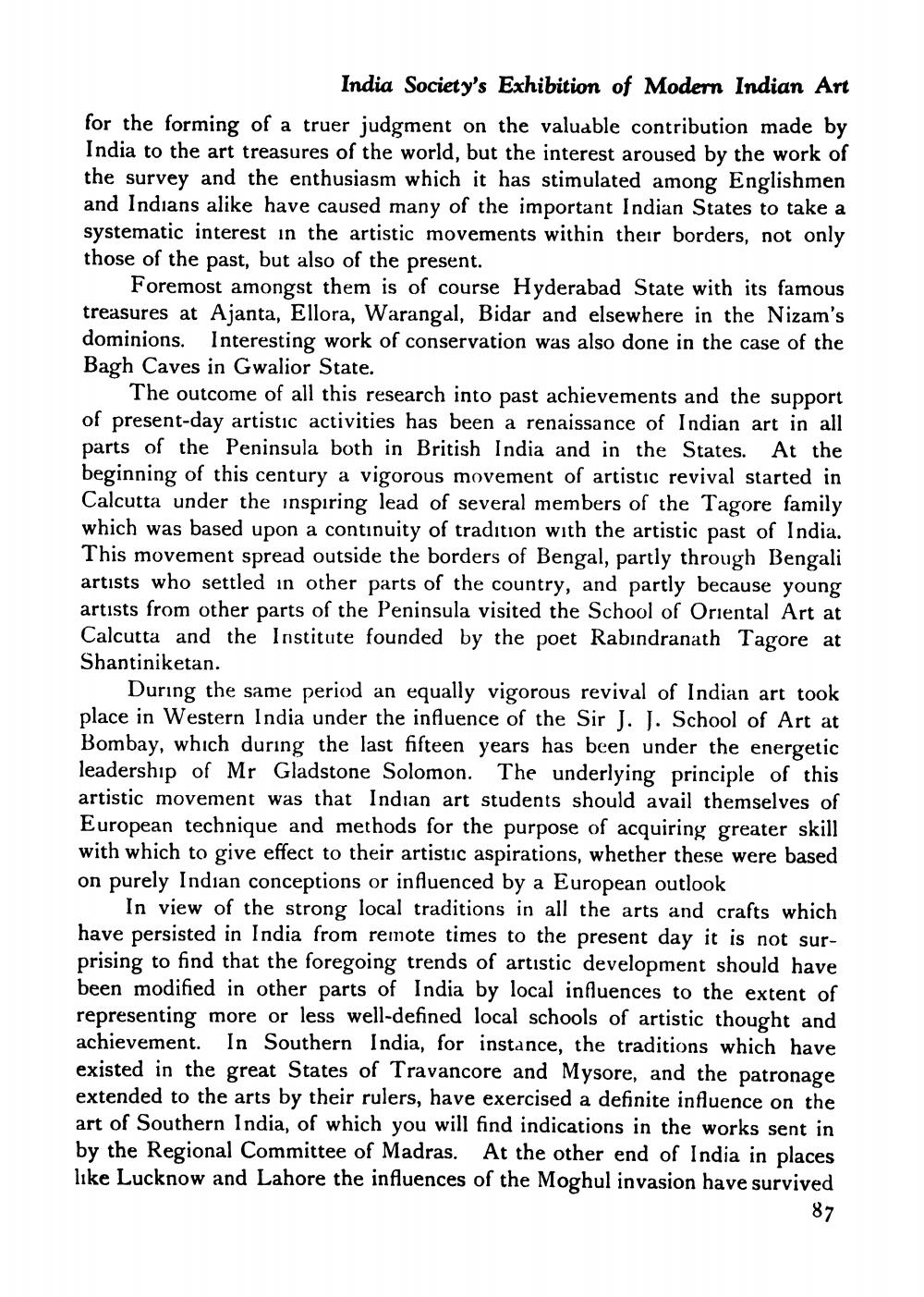Book Title: Indian Art and Letters Author(s): India Society Publisher: India Society View full book textPage 9
________________ India Society's Exhibition of Modern Indian Art for the forming of a truer judgment on the valuable contribution made by India to the art treasures of the world, but the interest aroused by the work of the survey and the enthusiasm which it has stimulated among Englishmen and Indians alike have caused many of the important Indian States to take a systematic interest in the artistic movements within their borders, not only those of the past, but also of the present. Foremost amongst them is of course Hyderabad State with its famous treasures at Ajanta, Ellora, Warangal, Bidar and elsewhere in the Nizam's dominions. Interesting work of conservation was also done in the case of the Bagh Caves in Gwalior State. The outcome of all this research into past achievements and the support of present-day artistic activities has been a renaissance of Indian art in all parts of the Peninsula both in British India and in the States. At the beginning of this century a vigorous movement of artistic revival started in Calcutta under the inspiring lead of several members of the Tagore family which was based upon a continuity of tradition with the artistic past of India. This movement spread outside the borders of Bengal, partly through Bengali artists who settled in other parts of the country, and partly because young artists from other parts of the Peninsula visited the School of Oriental Art at Calcutta and the Institute founded by the poet Rabindranath Tagore at Shantiniketan. During the same period an equally vigorous revival of Indian art took place in Western India under the influence of the Sir J. J. School of Art at Bombay, which during the last fifteen years has been under the energetic leadership of Mr Gladstone Solomon. The underlying principle of this artistic movement was that Indian art students should avail themselves of European technique and methods for the purpose of acquiring greater skill with which to give effect to their artistic aspirations, whether these were based on purely Indian conceptions or influenced by a European outlook In view of the strong local traditions in all the arts and crafts which have persisted in India from remote times to the present day it is not surprising to find that the foregoing trends of artistic development should have been modified in other parts of India by local influences to the extent of representing more or less well-defined local schools of artistic thought and achievement. In Southern India, for instance, the traditions which have d in the great States of Travancore and Mysore, and the patronage extended to the arts by their rulers, have exercised a definite influence on the art of Southern India, of which you will find indications in the works sent in by the Regional Committee of Madras. At the other end of India in places like Lucknow and Lahore the influences of the Moghul invasion have survived ook 87Page Navigation
1 ... 7 8 9 10 11 12 13 14 15 16 17 18 19 20 21 22 23 24 25 26 27 28 29 30 31 32 33 34 35 36 37 38 39 40 41 42 43 44 45 46 47 48 49 50 51 52 53 54 55 56 57 58 59 60 61 62 63 64 65 66 67 68 69 70 71 72 73 74 75 76 77 78 79 80 81 82 83 84 85
